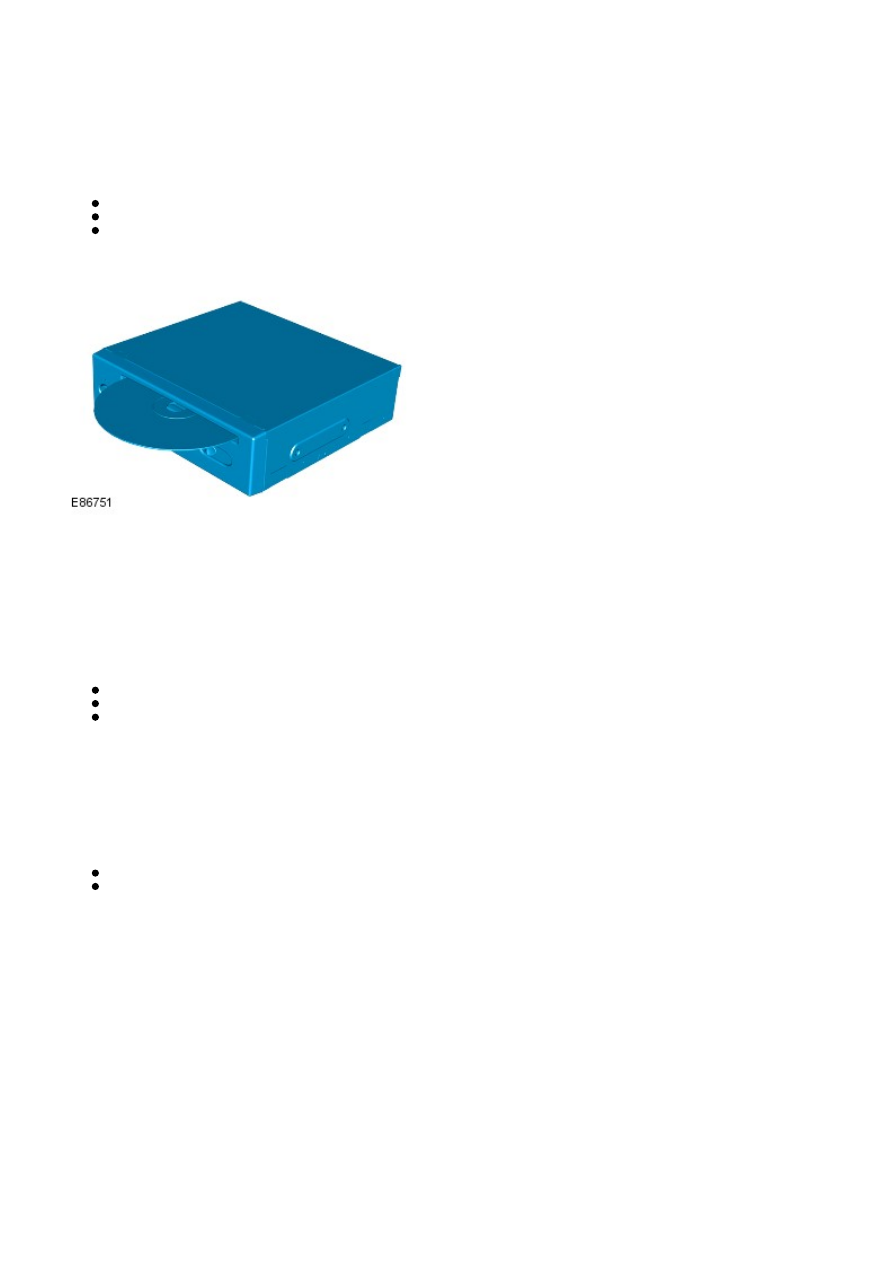Frelander 2. Manual - part 473

map information stored on a DVD to determine the best route for the journey and provide the driver with details of
directions and approaching junctions.
The navigation system is controlled by the driver from the touch screen display. Control signals from the touch screen
display are sent on the Media Orientated System Transport (MOST) ring to the infotainment control module where they are
then transmitted on the MOST ring to the navigation computer. The navigation computer uses a dedicated Gigabit Video
Interface (GVIF) to transmit video signals to the touch screen display.
Vehicles with navigation systems also incorporate additional traffic information systems. These are market dependant and
are as follows:
Europe - Traffic Message Channel (TMC).
Japan - Vehicle Information and Communication System (VICS).
NAS - No additional system.
Navigation Computer
The navigation computer located under the right-hand front seat, houses the DVD drive that reads the map data from the
region specific DVD. Access to the DVD slot is from the rear of the seat.
A button, located adjacent to the DVD slot, is provided to eject the DVD from the unit. Prior to ejecting the disc the slot
protection has to be slid to the side. If the ignition is on, or the entertainment system is in 1-hour mode, one press of the
button will eject the DVD.
Connected to the MOST bus, the navigation computer generates its own graphics and transmits them to the touch screen
display on a dedicated Gigabyte Video Interface (GVIF) bus.
The navigation computer also incorporates the following:
GPS receiver
VICS receiver (Japan only)
Traffic Message Channel (TMC) receiver
The GPS receiver receives information from between 1 and 8 satellites at any one time. This information is received from
the GPS antenna. The built in GPS receiver is used for calculating the position (i.e. latitude, longitude and height),
direction and speed.
The navigation computer contains a solid state piezo gyro which measures the motion of the vehicle around its vertical
axis. The gyro operates on the principle known as the Coriolis force. The Coriolis force is the force that appears to
accelerate a body moving away from its rotational axis against the direction of rotation of the axis.
To calculate the vehicle's current position, direction and speed, the navigation computer uses:
speed signals transmitted on the high-speed CAN from the ABS module to the MOST ring,
and signals transmitted from the GPS antenna and the gyro sensor.
For the Japanese market the navigation computer incorporates a VICS receiver. The VICS receiver, receives information
from the VICS beacon antenna in the center of the instrument panel and the electric Frequency Modulation (FM) antenna.
Using this information the VICS system monitors information regarding traffic conditions from roadside transmitters, and if
necessary, adjusts the navigation instructions accordingly to avoid traffic congestion.
For certain European markets the navigation computer incorporates the Traffic Message Channel (TMC) receiver. The TMC
receiver decodes TMC data. The navigation computer then displays this information on the touch screen display and
re-routes the navigation guidance system to avoid traffic congestion. The TMC data is received via the electric FM antenna.
The navigation computer uses non-volatile memory to store settings and configuration information when it is powered
down. This process takes place just before the computer turns off.
Touch Screen Display